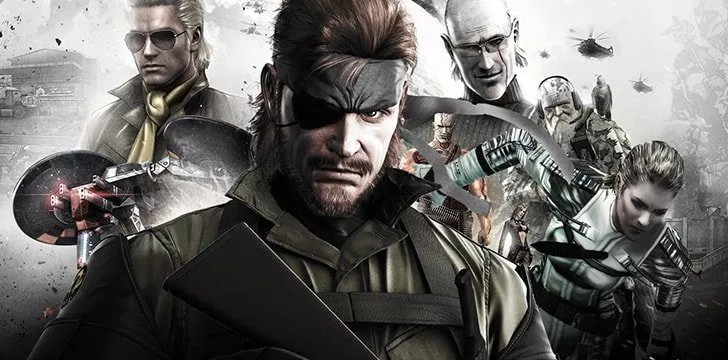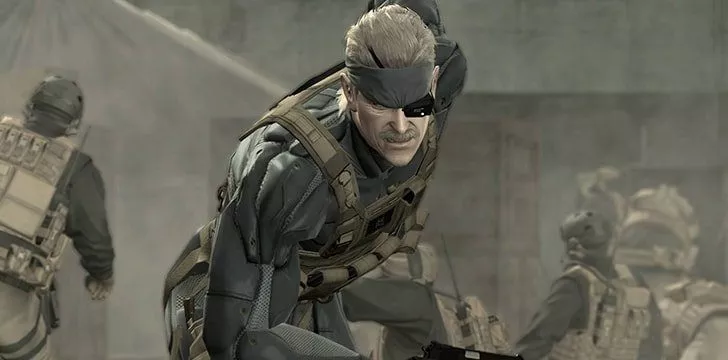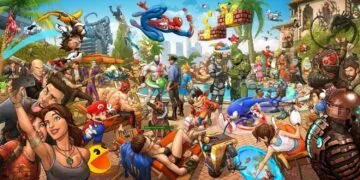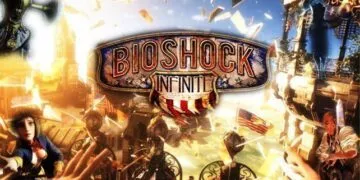Metal Gear Solid (commonly abbreviated to MGS) is a computer game directed by Hideo Kojima and published in 1998 by Konami and developed by Konami Computer Entertainment Japan.
MGS was originally released for the first PlayStation gaming console, and was a massive hit, shipping out more than six million copies worldwide.
Due to the commercial success of MGS it was remade and re-released for the PC as Metal Gear Solid: Integral, for the Game Boy Color as just Metal Gear Solid, and later for the Nintendo GameCube as Metal Gear Solid: The Twin Snakes.
Metal Gear Solid brands itself as Tactical Espionage Action, making it different from many other action games through the way it promotes stealth, technique and a less violent form of gameplay as large open confrontations often leads to the player’s death as I have found many times in the past.
Metal Gear Solid‘s storyline relieves heavily on codec scenes rather than cut-scenes.
This is due to the fact that during the time MGS was made, cut-scenes were costly and took a long time to create and render, more so than the simple codec scenes which advance the story just as much as a cut-scene would in set places.
Metal Gear Solid doesn’t have a solid “fourth wall.”

For example, characters will sometimes berate Snake for not saving the game enough, as well as telling Snake when to change the discs.
One of the game’s bosses – Psycho Mantis – reads Snake’s mind and history by reading information stored on the memory card.
After the tense, tense part of the game where Snake is tortured by Ocelot, Naomi Hunter asks the player to put the controller on their forearm for a “healing massage” in which the controller vibrates vigorously.
A little off subject, but who the player escapes with at the ending of the game (the two being Otacon and Meryl) is determined by weather they resist or succumb to Revolver Ocelot’s torture.
Snake’s support team also offers help and advice, often explaining combat and playing techniques in gaming terms.
For example, pressing the crawl button is their term for crawling or pressing the action button is their term for just about anything!
MGS’ Original Name
MGS was originally meant to be Metal Gear Three, but the game’s producer and developer Hideo Kojima thought that the Metal Gear series was not well enough known and therefore changed it.
The world Solid was chosen by Kojima due to it being the third installment in his game series, and because it uses 3D computer graphics as well as being a reference to Solid Snake, the game’s main protagonist.
The development of MGS began within mid-1995; with the intention of being the “best PlayStation game ever” and coming very close in my books.
Accuracy and realism were paramount to the development of MGS whilst also aiming to make the game both tense and enjoyable.
The game’s development included demonstrations of vehicles, weapons and explosives by the Huntington Beach SWAT team, as well as visits to Fort Irwin and firing sessions at Stembridge Gun Rentals.
Kojima was intent on making detail the devil of his work within MGS, so much so that each desk within the game was individually designed!
The Development of the Characters

The characters of MGS were completed by polygonal artists using brush drawings and clay models made by conceptual artist Yoji Shinkawa. Kojima wished for greater environment and object interaction within his game, such as allowing the player to hide bodies within storage compartments.
On top of this, Kojima also wanted “a full orchestra right next to the player”; this being a system which made modifications such as tempo and texture to the currently playing track, instead of switching to another pre-recorded track.
Despite the fact that these features could not be achieved upon the used platform, they were later implemented within Metal Gear Solid 2: Sons of Liberty.
First shown to the public at E3 in 1997, and first playable at the Tokyo Game Show in 1998, MGS was released with an extensive advertising campaign.
During this campaign, an estimated 12 million demos were distributed in 1998, as well as television and magazine adverts and in-store samples all contributed to a whopping total of 8 million US dollar spend in promotional costs!
All of this and much more put Hideo Kojima, Konami and the Metal Gear Solid series on the map as one of gaming’s biggest ever outputs.


















